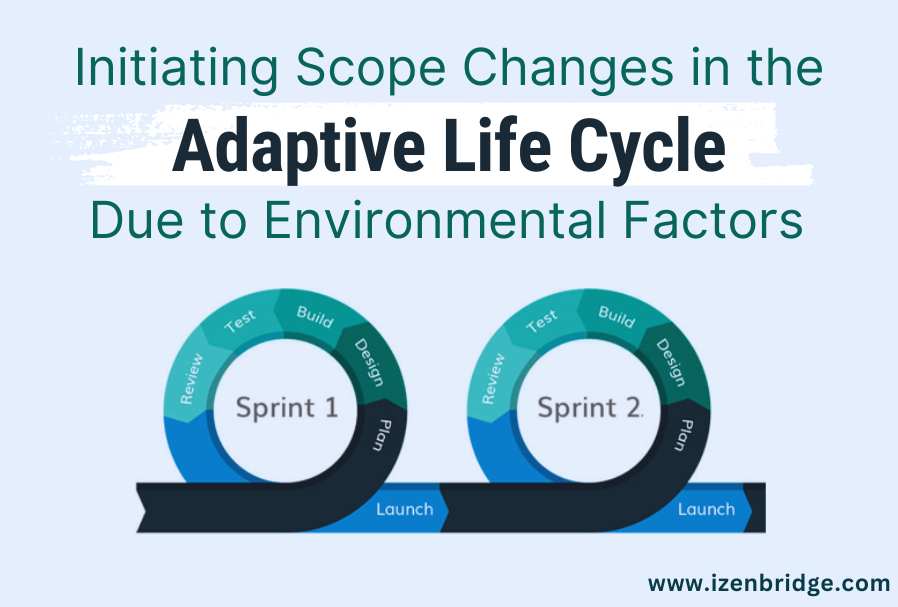

The adaptive life cycle, also known as agile or change-driven, is a project management approach where change is anticipated and welcomed. This contrasts with the predictive life cycle, where the project’s scope, time, and cost are determined at the beginning, and any subsequent changes are managed carefully. In the adaptive life cycle, changes can be incorporated into the project due to various reasons, including environmental factors. In this article, we will explore how to initiate any scope change in the adaptive life cycle, particularly due to external environmental factors.
Unlike the predictive life cycle, in an adaptive life cycle, there is no locked down scope or baseline scope. Instead, the project team works with high-level ideas that are incorporated into a product backlog, a dynamic document that is continuously updated as requirements change or new requirements emerge.
Technically, in an adaptive life cycle, there isn’t a document called ‘scope document.’ Instead, what we have is a continuous process of review, interaction, and change prioritization, known as backlog refinement or backlog grooming. The backlog serves as a living requirements document rather than a scope document.
Check our detailed blog on Product Backlog
When changes arise, particularly due to environmental factors, they are presented to the backlog refinement group. This group, usually composed of key stakeholders, reviews the new requirements or changes and decides how to incorporate them into the project.
However, not all changes can be handled at the backlog refinement stage. Some changes may have a significant impact on the overall vision or direction of the product. In such cases, the changes may need to be escalated to a governance group or higher-level stakeholders. It’s crucial to understand that there may be instances where a larger governance group must be consulted to discuss significant changes.
For example, the project might have planned to allocate a team for six months, but due to some environmental factor, it is now necessary to contract a vendor for a year. Such a change may extend beyond the purview of the backlog refinement group and require the involvement of additional stakeholders.
While preparing for your PMP exam, it’s crucial to clearly understand how to manage change scenarios in an adaptive or Agile approach. These scenarios might entail a stakeholder requesting a change or an alteration due to a technical or environmental shift. Here are some essential tips to remember:
Navigating the adaptive life cycle effectively involves a comprehensive understanding of handling changes, particularly in response to environmental factors. Unlike the predictive life cycle, the adaptive approach embraces change, ensuring continuous review, interaction, and prioritization. The active involvement of key stakeholders, the Product Owner’s leadership, and the timely management of changes play a crucial role in this approach. Furthermore, the preservation of current sprint goals, along with emphasizing value, promoting collaboration, and adhering to Agile values, facilitates optimal project execution.
However, mastering these elements of the adaptive life cycle can be challenging without a solid foundation in project management principles and real-world application. Therefore, we strongly recommend joining our PMP Live Training Program to speed up your preparation and deepen your understanding.
| Name | Date | Place | – |
| PMP Certification and Training | 15 – 30 November 2025 | Bangalore | More Details |
| PMP Certification and Training | 9 Dec’25 – 7 Jan’26 | Chennai | More Details |